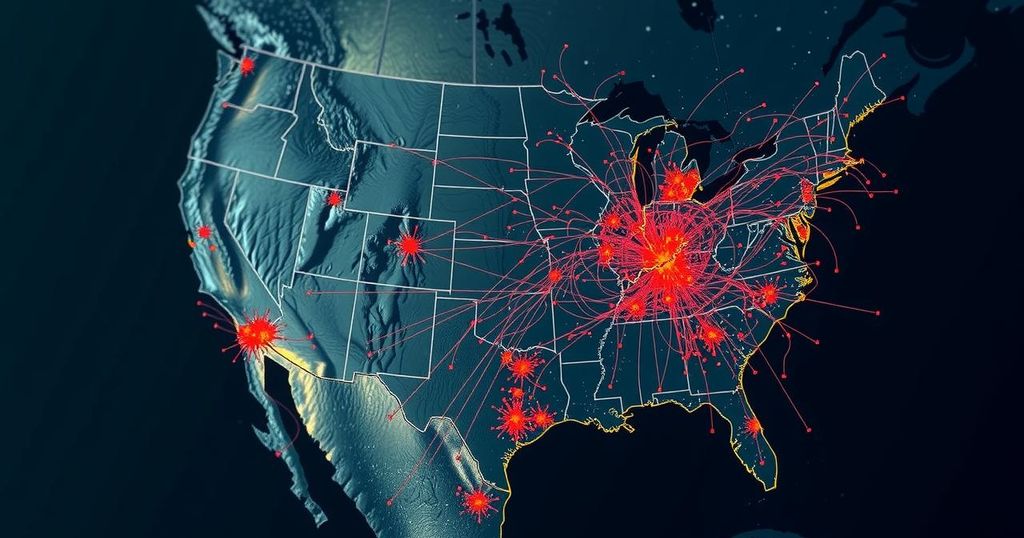3.4 Magnitude Earthquake Reported in New Mexico on November 21, 2024

A 3.4-magnitude earthquake struck New Mexico on November 21, 2024, according to the USGS. It was centered in Alum Rock at a depth of 7.3 kilometers. This event occurred shortly after a 2.7-magnitude quake in California and followed significant seismic activity in Papua New Guinea, Mexico, and other regions, indicating a period of increased global earthquake occurrences.
On November 21, 2024, a 3.4-magnitude earthquake was registered in New Mexico near Alum Rock, positioned at a depth of 7.3 kilometers (approximately 4.5 miles), as reported by the United States Geological Survey (USGS). At the time of publication, only one individual reported feeling the tremor. This seismic event in New Mexico occurred just two days following a 2.7-magnitude earthquake in California that had its epicenter in Alum Rock, determined at a depth of 6.4 kilometers (around 4.0 miles).
In a broader context, the recent seismic activity is notable. Just prior to the New Mexico earthquake, on November 15, a significant 6.6-magnitude quake struck Papua New Guinea, originating from a depth of 51.9 kilometers (about 32.2 miles) in Kokopo, indicating the region’s geological instability. This was part of a sequence of earthquakes that began with a 5.0-magnitude quake in Mexico on November 13, occurring at a depth of 12.6 kilometers (approximately 7.9 miles) in Santiago Tepextla.
Furthermore, the pattern continued with various earthquakes reported globally, including a 4.2-magnitude quake in Australia at 11.1 kilometers (6.9 miles) deep and a 4.4-magnitude tremor in India at a depth of 10 kilometers (6.2 miles) on November 12. The earthquake activity has extended further, with significant seismic events noted in Cuba, Panama, and Chile earlier in the month, underscoring a period of heightened seismic activity across multiple regions.
The United States Geological Survey continues to monitor these incidents closely, providing valuable updates and data regarding ongoing seismic activity. The interconnectedness of these geological events may provide insights into broader tectonic shifts, reinforcing the need for preparedness in earthquake-prone areas as the frequency of these tremors increases.
The report highlights a series of recent earthquakes across various global regions, emphasizing the ongoing seismic activity. Earthquakes are common occurrences due to the movements of tectonic plates where the earth’s crust is fractured. Understanding these seismic events is critical for public safety, preparedness, and further geological study. The USGS plays a vital role in monitoring seismic activity and providing timely reports to the public and emergency services, increasing awareness of potential hazards. Recent tremors, particularly in New Mexico, California, Mexico, and Papua New Guinea, indicate a significant period of earth movement that demands attention. The data provided by the USGS serves as an essential tool for researchers and disaster management authorities, enhancing their response strategies in the face of natural disasters.
In conclusion, the recent 3.4-magnitude earthquake in New Mexico represents part of a larger pattern of seismic activity observed globally. With various earthquakes reported in California, Papua New Guinea, and Mexico, this trend highlights the importance of vigilance and preparedness in regions affected by tremors. The United States Geological Survey’s continuous monitoring and reporting of such events is crucial for building a comprehensive understanding of seismic activity and enhancing public safety measures.
Original Source: www.iheart.com







